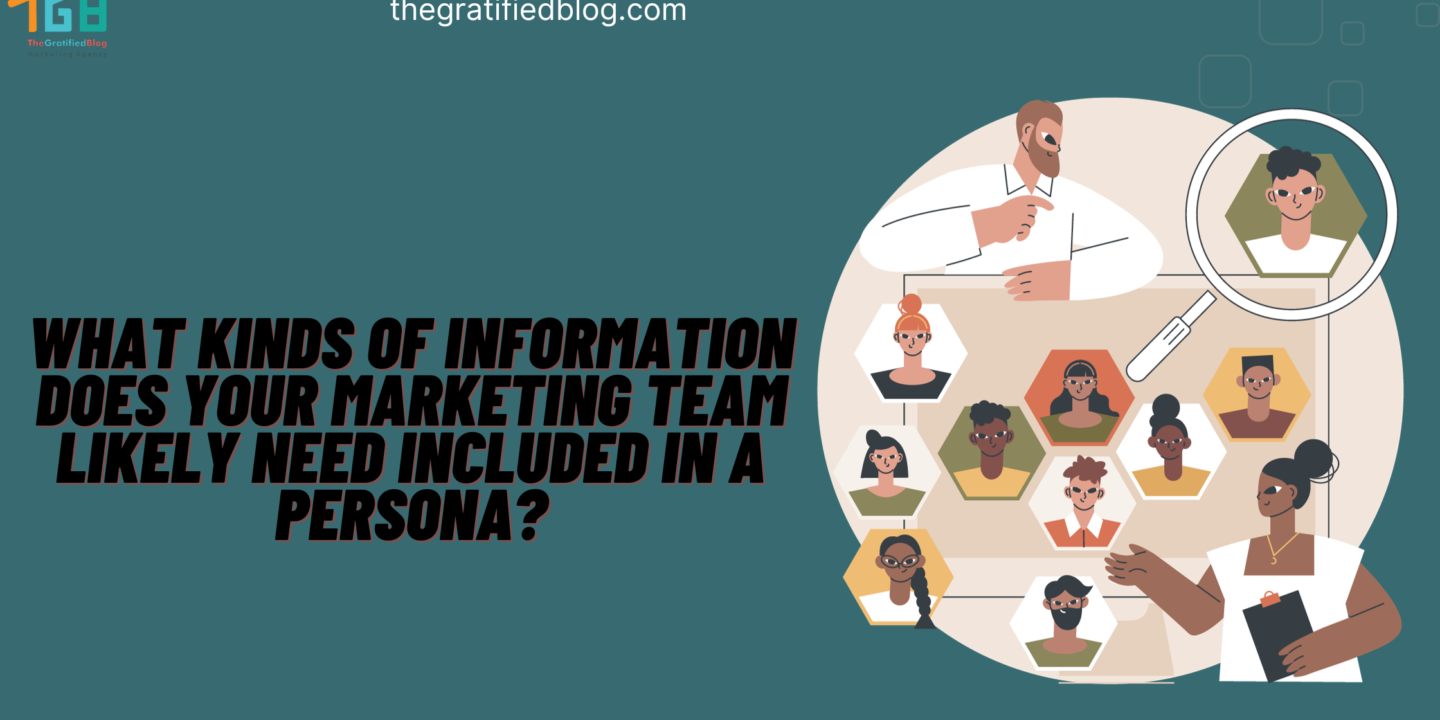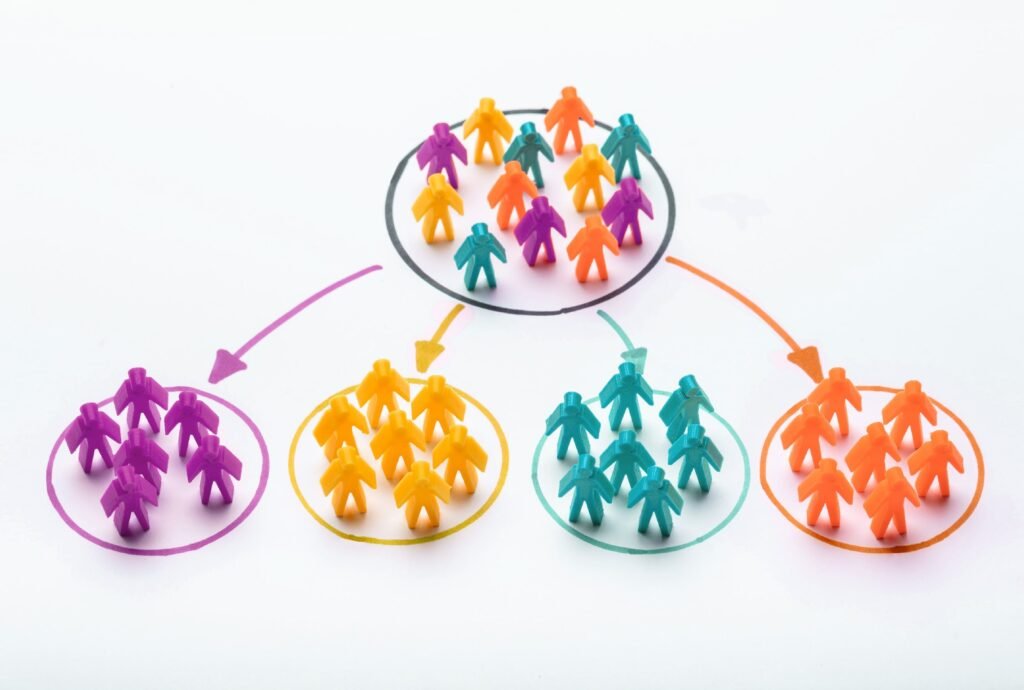
Welcome to our insightful blog, where we unravel the intricacies of crafting effective marketing personas. Today, we delve into a crucial question: “What kinds of information does your marketing team likely need included in a persona?”
In the dynamic world of marketing, understanding and harnessing the power of customer personas is key. Join us on this journey as we explore the essential elements that should be included in crafting personas, empowering your marketing team to create targeted and impactful strategies.
Let’s unlock the secrets to constructing personas that resonate and drive success in your marketing endeavors.
What Are Marketing Personas?
Marketing personas, also known as buyer personas or customer personas, are semi-fictional representations of your ideal customers. They are created by businesses to understand better and target their diverse customer base.
These personas are built on demographic, psychographic, behavioral data, market research, and customer insights. It is a buyer persona. Marketing personas help businesses humanize their target audience, providing a clearer picture of their needs, preferences, and pain points.
They are invaluable tools for tailoring marketing strategies, content, and product development. By defining specific personas, companies can enhance their messaging, improve product design, and optimize customer experiences, ultimately leading to more effective and personalized marketing efforts.
These personas aid in aligning the entire organization around a shared understanding of their customer base, facilitating better decision-making and customer-focused strategies.
How Do Marketing Personas Work?
Marketing personas work by creating a detailed and empathetic view of your ideal customers. These personas are built upon research, data analysis, and a deep understanding of your target audience.
They help your marketing team make data-driven decisions, from product development to content creation and ad targeting.
Here’s how marketing personas typically work:
Research

Research is the initial step in developing marketing personas. It encompasses data collection through surveys, interviews, and examining existing customer information. The primary objective is to discern patterns and commonalities within the target audience.
This research-driven approach helps marketers understand their customers better, leading to the creation of accurate and relatable marketing personas.
These personas guide marketing strategies and campaigns, enabling businesses to effectively tailor their messaging and content to connect with their ideal customers.
Segmentation

Once you have enough data, you can segment your audience into distinct groups. These segments are the basis for creating different marketing personas. Marketing personas are detailed profiles representing typical customers within each segment.
They encompass demographic information, behaviors, preferences, and pain points. These personas help marketers understand and empathize with their target audience, leading to more tailored and effective marketing strategies.
Marketers can craft personalized content, messaging, and offers that resonate with specific customer groups through personas. This leads to higher engagement, better conversion rates, and improved customer satisfaction.
Regular updates and refinement of personas ensure they remain relevant in an ever-evolving market, allowing businesses to adapt and thrive. Marketing personas guide businesses in making data-driven decisions to serve their customers better and achieve their marketing goals.
Persona Creation

Creating marketing personas involves developing a detailed representation of a target audience segment. This entails assigning a name, age, profession, and demographic data to the persona. However, it goes beyond basic information.
Marketers delve into psychographics, exploring the persona’s goals, pain points, hobbies, values, and preferred communication channels. This thorough understanding allows businesses to humanize their audience, fostering empathy and connection.
By developing relatable characters, marketers tailor their strategies, content, and messaging to resonate with these personas, effectively personalizing their marketing approach.
This personalized approach enhances customer engagement, improves product/service alignment, and ultimately boosts the success of marketing campaigns. Marketing personas are indispensable for crafting more relevant and impactful marketing strategies.
Empathy

Empathy is the foundation of effective marketing personas. It’s crucial to delve deep into the mindset of your target audience. This involves understanding their fears, desires, and the factors influencing their decision-making process.
By putting yourself in their shoes, you can gain insights into their challenges and the solutions they seek. This empathetic approach allows you to tailor your marketing strategies and content to address their needs and pain points.
By walking a mile in their virtual shoes, you can craft personas that accurately represent the customer’s perspective. These personas become invaluable tools for marketing, guiding product development, content creation, and customer engagement strategies.
They enable businesses to connect personally with their audience, fostering stronger relationships and effective communication. This empathetic foundation enhances the relevance and impact of your marketing efforts, helping you better serve your customers.
Implementation

Armed with these personas, your marketing team can tailor content, ads, and messaging to match the needs and preferences of each persona. This increases the relevance and resonance of your marketing efforts.
Marketing personas serve as fictional representations of your target audience, providing a deep understanding of their demographics, behaviors, and pain points. You can create more targeted and personalized campaigns by aligning your marketing strategies with these personas.
This leads to better engagement, as your content resonates with the specific interests of each persona, driving higher conversion rates. Personas help develop products by highlighting features and improvements that appeal to different segments.
Through continuous refinement of personas, you can adapt your strategies to evolving consumer behaviors, ensuring long-term marketing success. Marketing personas are essential tools that empower your team to connect with your audience effectively, enhancing brand loyalty and driving business growth.
What Kinds Of Information Does Your Marketing Team Likely Need Included In A Persona?
Creating a compelling marketing persona involves collecting various types of information. The essential details include:
Demographics: Start with the basics – age, gender, location, income, and job title. These provide a foundational understanding of who your persona is. The marketing team should also delve into psychographics, encompassing personality traits, values, interests, and lifestyle choices.
Understanding their pain points and challenges is vital for crafting effective marketing strategies. Behavioral data, such as online habits, purchasing history, and preferred communication channels, offers insight into how to reach and engage the persona.
Knowing their goals and aspirations can help tailor messages and content to resonate with their ambitions. Lastly, considering their objections and objections enables the team to address potential barriers and objections in their marketing efforts.
By collecting and analyzing these multifaceted data points, the marketing team can create comprehensive and targeted personas to effectively inform their campaigns.
Psychographics: Go deeper into the persona’s motivations, challenges, values, and aspirations. Understand their pain points and what drives their decision-making. The marketing team will benefit from insights into the persona’s media consumption habits to target them effectively.
Details about their preferred communication channels, social media platforms, and content preferences are crucial.
Knowing their shopping behavior, including online versus in-store, and factors influencing purchase decisions such as brand loyalty, price sensitivity, or product quality will enhance marketing strategies.
Demographic data like age, gender, and location remains essential, as it help tailor messaging. Information on their education, income level, and occupation can refine targeting.
Understanding their objections and barriers to purchase allows the team to address and overcome potential obstacles.
Behavior Patterns: What are their online and offline behaviors? What websites do they visit, which social media platforms do they use, and how do they consume content? This helps in targeting the proper channels and optimizing user experience.
Understanding a persona’s behavior patterns provides valuable insights into their digital footprint, helping the marketing team tailor strategies for effective online engagement.
This information also guides decisions on the most suitable social media platforms and content formats to reach and resonate with the target audience.
Identifying their offline behaviors aids in crafting holistic marketing campaigns, ensuring a seamless transition between online and offline touchpoints.
By delving into their content consumption habits, the team can refine content creation and distribution methods to align with the audience’s preferences and behaviors, ultimately enhancing the overall marketing approach.
Communication Preferences: How does the persona prefer to receive information? Do they like emails, social media, phone calls, or in-person meetings? Tailor your communication to match their preferences.
To communicate preferences, your marketing team should consider demographic details such as age, gender, and location. These factors can influence how your persona perceives and engages with your messaging.
Understanding their pain points and challenges is vital, as addressing these issues in your marketing efforts can be highly effective.
The persona’s goals and aspirations are equally crucial, as aligning your message with their desires can drive engagement. Evaluating their online behavior, such as the platforms they frequent and their information-seeking habits, aids in crafting targeted content.
Understanding their purchase behavior and decision-making process helps tailor marketing strategies to meet their needs and preferences.
Buying Habits: What is their decision-making process when making a purchase? Understanding this can help refine your sales strategy. The marketing team should gather information on the persona’s preferred channels for product discovery and how they research potential purchases.
Insights into the frequency and timing of their buying decisions are crucial for targeted marketing campaigns. Understanding budget constraints and the typical price range they are willing to pay is essential to tailor promotions effectively.
Identifying the factors influencing their choices, such as reviews, recommendations, or brand loyalty, can inform messaging and content creation.
To optimize customer retention and advocacy strategies, the team should assess post-purchase behavior, including feedback, reviews, and potential referrals. This data enables the marketing team to craft compelling and resonant messages, enhancing the overall effectiveness of their campaigns.
Content Preferences: What kind of content do they engage with the most? This could be blog posts, videos, infographics, or podcasts. Create content that aligns with their preferences. Understanding your target persona’s content preferences is crucial for effective marketing strategies.
Your marketing team needs to know which types of content resonate best with the persona to tailor their efforts accordingly. By identifying whether your audience prefers blog posts, videos, infographics, or podcasts, you can optimize content creation and distribution to meet their expectations.
This insight enables your team to deliver content that captivates and retains their attention, ultimately driving engagement and conversion. It also helps allocate resources wisely, ensuring the content strategy aligns seamlessly with the persona’s interests and communication channels.
Knowing your persona’s content preferences is pivotal in crafting a successful and resonant marketing campaign.
Goals and Challenges: Know their primary goals and challenges in achieving them. Your products or services should provide solutions to these challenges. Your marketing team should gather information on the persona’s demographics, such as age, gender, location, and income, to tailor their messaging effectively.
Understanding the persona’s psychographics, including their values, interests, and lifestyle, can help create content that resonates with them. Behavioral insights are essential, as they shed light on the persona’s online habits, preferred platforms, and buying behavior.
Their pain points and objections must be identified to address potential barriers to conversion. Data on the persona’s preferred communication channels and content formats helps craft a targeted marketing strategy.
Knowing the persona’s role in the decision-making process, whether a decision-maker, influencer or end user, is crucial for tailoring your messaging and approach.
FAQ’S
Which of the following best describes a buyer persona?
Ans: A buyer persona is a semi-fictional representation of an ideal customer. It helps businesses understand their target audience better by creating a detailed profile that encapsulates their typical characteristics, behaviors, and needs.
Demographics
A buyer persona encompasses demographic information such as age, gender, income, education, and location to create a well-rounded understanding of the customer.
Psychographics
It also delves into the customer’s psychographics, including their motivations, interests, pain points, and buying behaviors, allowing businesses to tailor their marketing strategies to meet specific needs and preferences.
Conclusion
marketing personas are vital for businesses seeking to personally connect with their target audience. To create effective personas, your marketing team must gather comprehensive information about your ideal customers, including their demographics, behaviors, communication preferences, goals, and pain points.
By understanding these aspects, you can tailor your marketing strategies to speak directly to the needs and desires of your audience, ultimately increasing your chances of success in the competitive marketing world.








No Comments